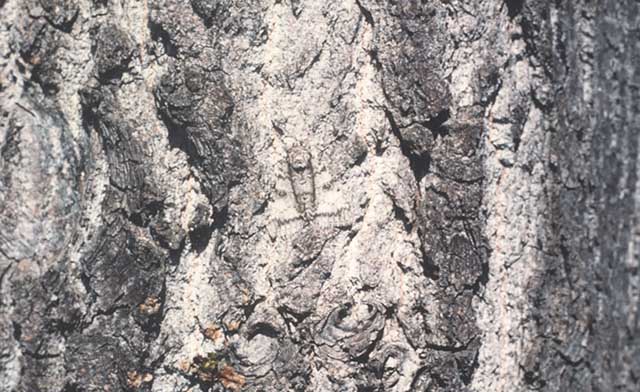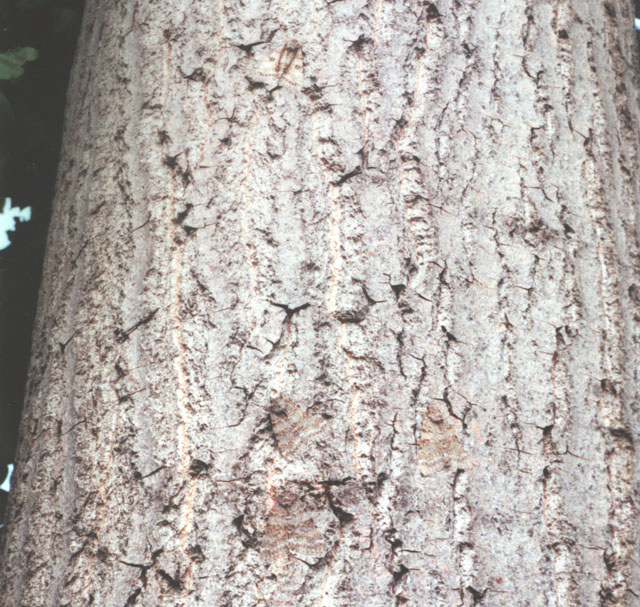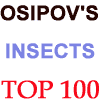Catocala semirelicta hippolyta
Catocala semirelicta hippolyta
kah-TOCK-uh-lahmseh-mye-reh-LICT-uhmhip-POLL-ih-tuh
Strecker, 1874

Catocala semirelicta hippolyta 280 feet, Ventura City, Ventura County,
California,
July 2 2002, courtesy of Tom Dimock
This site has been created by
Bill Oehlke at oehlkew@islandtelecom.com
Comments, suggestions and/or additional information are welcomed by Bill.
| TAXONOMY:
Superfamily: Noctuoidea
Family: Noctuidae
Group: Noctuinina
Subfamily: Catocalinae
Genus: Catocala, Schrank, 1802
| |
MIDI MUSIC
"Moon River"
copyright C. Odenkirk
MIDI CITYON.OFF
<bgsound src="moon.mid" LOOP=FOREVER>
|
DISTRIBUTION:
Catocala semirelicta hippolyta
(wingspan: males: 72-76mm; females: probably larger) flies in
California as a coastal species,
probably from Contra Costa and Alameda to Ventura and Los Angeles counties.
There is a white border just inside the subterminal line. The post
medial line lacks any outward jagged projections, being more
uniformly zig-zag except for an inward projecting "tooth" near the
anal angle.

Catocala smirelicta hippolyta Ventura City, Ventura County, California,
August 3, 2001, courtesy of
Tom Dimock
The inner black band on the scarlet hindwing is very narrow, tapering
to a curved point, terminating well before the inner margin. The
fringe is white and continuous from the apex to the anal angle.
The moth formerly classified as Catocala hippolyta is now (2010) considered a subspecies of semirelicta, while
those moths previously described as Catocala nevadensis and Catocala pura
are now (2010) considered to be synonymous with Catocala semirelicta.
FLIGHT TIMES AND PREFERRED FOOD PLANTS:
Catocala
semirelicta hippolyta flies as a single generation with moths on the wing
from late June to very early October, with most moths done flying
by the end of August.
Catocala semirelicta hippolyta larvae probably feed on poplar as that is
where above males were resting when captured. They are extremely
well camouflaged at rest when hindwings are covered.

Catocala semirelicta hippolyta Ventura County, California,
courtesy of Tom Dimock
ECLOSION:
Adults eclose from pupae formed under leaf
litter.
SCENTING AND MATING:
Catocala semirelicta hippolyta females
emit an airbourne pheromone and males use their antennae to track the
scent plume. This is a sexually dimorphic species.

How many C. semirelicta hippolyta can you find on the poplar trunk?? Keep looking!
Catocala hippolyta foursome, Ventura Co.,
Ventura City, Hill Road, 280 Ft,
3 August 2001, courtesy Tom Dimock
EGGS, CATERPILLARS, COCOONS AND PUPAE:
Eggs are deposited on tree bark in the fall and hatch the
following spring.
Mature larvae probably feed at night, and they may hide in leaf
litter during the day near the base of the tree.
Larval Food Plants
Listed below are primary food plant(s) and alternate food plants.
It is hoped that this alphabetical listing followed by the common
name of the foodplant will prove useful. The list is not exhaustive,
although some species seem very host specific.
Experimenting with closely related foodplants is worthwhile.
Use your browser "Back button to return to the previous page.
Goto Main Catocala Index
This page is brought to you by Bill Oehlke and the
WLSS. Pages are on space rented from Bizland. If you would like to become a "Patron of the Sphingidae/Catocala Sites",
contact Bill.
Please send sightings/images to Bill. I will do my best to respond to requests for identification help.
Enjoy one of nature's wonderments: Live Saturniidae (Giant Silkmoth) cocoons.

|

To show appreciation for this site, click on the flashing
butterfly to the left, a link to many worldwide insect sites. |





